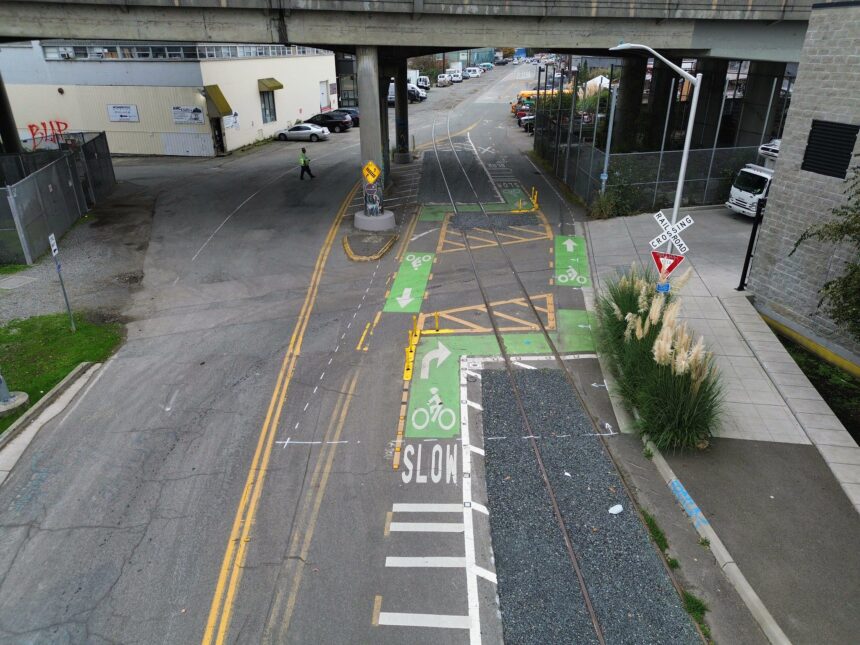The Seattle City Council unanimously passed legislation today, sponsored by Councilmember Dan Strauss (District 6- Northwest Seattle), that will allow the City to fix a notoriously dangerous section of the Burke Gilman Trail’s Missing Link.
“I am excited we can finally make one of the most dangerous railroad crossings in our city safe for people riding bikes. When I was in grade-school I watched someone crash on these tracks the very first time I rode my bike on this section of the Missing Link and I am glad we can finally put a stop to this,” said Councilmember Dan Strauss. “I am proud to deliver this outcome for District 6 and our City by bringing people together to find common ground.”
“We’re thrilled to improve the paving and enhance safety for people riding bikes under the Ballard Bridge and we are moving forward immediately to do so,” said Francisca Stefan, Senior Deputy Director, Seattle Department of Transportation. “Our dedication to improving safety and accessibility for all members of our community remains steadfast, and we eagerly anticipate the positive transformation these changes will bring to our city’s cycling network.”
What the legislation does
A rail line on Shilshole Ave NW, near the Ballard Bridge, runs directly through the bike lane. A number of injuries have occurred there.
The legislation passed today strikes a deal that will allow Ballard Terminal Railroad to transfer ownership of the line to Meeker Southern Railroad. In doing so, it will allow the Seattle Department of Transportation (SDOT) to make long-sought safety improvements, which include paving over the dangerous section of rail.
When the safety improvements will be made
SDOT is expected to complete the paving work this Thursday and Friday (October 26 and 27), but work is weather-dependent and exact timing is subject to change. While this work is taking place, bike riders will need to detour around the work zone via 14th Ave NW and NW 46th St.
The new asphalt covering will allow people to bike through the area without crossing the tracks at a sharp angle. It will help transform the way bikers navigate through the area, reducing the need for bikers to slow down to cross the tracks. More information about the project can be found on the SDOT Blog.


